DANES FORM FREEDOM COUNCIL
Copenhagen, Occupied Denmark · September 16, 1943
On April 9, 1940, Germany invaded Denmark, overrunning the tiny country of just over 3.8 million people and its army of 14,500 soldiers (the majority recruits) in less than a day. The Danish government and king remained in place, collaborating as little as possible with the enemy. In an effort to create a “model protectorate” out of Denmark, the occupation authorities initially interfered as little as possible in Danish governance, policing, and the legal system, even in the face of growing discontent among Danes over blackouts, shortages of goods, and rationing.
In mid-1942 the banned Danish Communist Party set up saboteur groups that carried out sabotage using homemade fire bombs—all they had at the moment in their weapons arsenal. Members were mostly Spanish Civil War (1936–1939) veterans who had fought against Gen. Francisco Franco and his Axis supporters. Other resistance groups included Holger Danske, formed in Copenhagen in 1942 by veteran volunteers who had fought on the Finnish side against the Soviet Union during the Winter War (November 1939 to March 1940); the tiny Hvidsten group, started in 1943 but stubbed out in 1944 when its members were arrested by the German Gestapo (secret police); and the Borgerlige Partisaner (“Civic Partisans”), or BOPA, started in early 1943 by students who had been excluded from the KOPA (Kommunistiske Partisaner, “Communist Partisans”).
On this date in 1943 the largest resistance organizations—the Communists, Dansk Samling, Frit Danmark, and Ringen—formed a joint Freedom Council (Frihedsrådet). The Council aimed to not only coordinate the hitherto scattered resistance initiatives, but to plan for what Denmark was going to become after the war. Through its contact with the London-based Special Operations Executive (SOE), the Freedom Council came to represent the entire Danish resistance movement vis-à-vis the Allies. Following the Copenhagen workers’ strike of June and July 1944, and especially after the start of the German pogrom against Danish Jews at the end of September 1944, the leaders of the German-sanctioned Danish political parties felt compelled to enter into a compromise with the Council. The Danish state even channeled money to the resistance by way of its Social Ministry. Cooperation within the Council and the compromise with Danish politicians ensured an almost nonviolent transition from wartime occupation to postwar peace in 1945.
[amazon_carousel widget_type=”ASINList” width=”600″ height=”200″ title=”Recommended Reading” market_place=”US” shuffle_products=”False” show_border=”False” asin=”1628723718,1555716385,0813342783,9652293970,0692016619,0304361593,0521158443,1598453432,8778386918,0756542987″ /]
Danish Resistance, 1943–1945
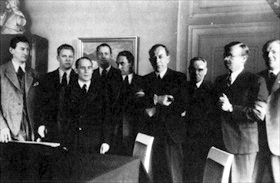 | 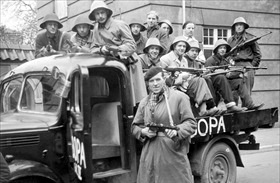 |
Left: Partial membership on the Danish Freedom Council (Frihedsrådet), Denmark’s unofficial in-country government-in-exile. Created in September 1943, the Danish Freedom Council attempted to unify the many different groups that comprised the Danish resistance movement (Modstandsbevægelsen). It was made up of seven resistance representatives and one member of Britain’s SOE, which was engaged in making airdrops of agents and supplies. The resistance movement grew to over 20,000 members, and in the lead-up to D-Day (June 6, 1944) acts of sabotage markedly increased.
![]()
Right: Members of BOPA (BOrgerlige PArtisaner, or “Civic Partisans”) in a truck. Due to the unusually lenient terms given to Denmark by the Nazi occupation authorities (Denmark was not officially at war with Germany), the Danish resistance movement was slower to develop effective tactics on a wide scale compared with some other occupied countries. However, by 1943 many Danes were involved in underground activities ranging from producing illegal publications to spying, bomb making, and sabotage.
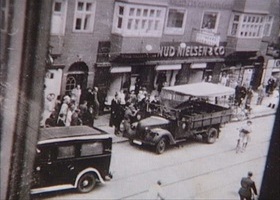 | 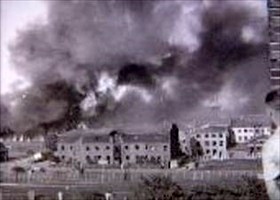 |
Left: German truck sabotaged by BOPA. The Danish government actively discouraged violent resistance because it feared a backlash from German occupation authorities. As time went on, many insurgent groups formed to oppose the occupation and shifted to more violent action. At the beginning of 1943, Communist (KOPA) resistance cells were centrally coordinated under BOPA. BOPA was the most effective sabotage organization in Denmark and was behind numerous acts of sabotage, the most famous being the June 6, 1944, surprise daylight raid on the Globus factory, which had been making parts for Germany’s V‑2 ballistic rocket. In August 1943 German authorities reacted harshly to the increased level of sabotage and formally seized the reins of power, making Denmark legally an “occupied country.”
![]()
Right: Copenhagen arms factory (Dansk Riffelsyndikatet) sabotaged by BOPA on June 22, 1944. The factory in Copenhagen’s Frihaven district was the only Danish factory making small arms, antitank guns, and artillery. Thousands of Copenhageners watched the buildings burn down to an empty shell. By the end of the war the Danish resistance movement had scored many successes, losing slightly more than 850 resistance members killed in action, in prison, in concentration camps, or (in the case of 102 resistance members) executed following courts-martial.
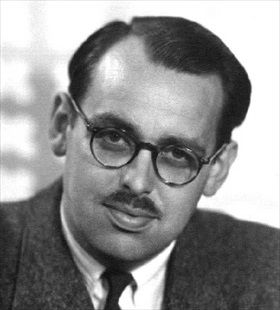 | 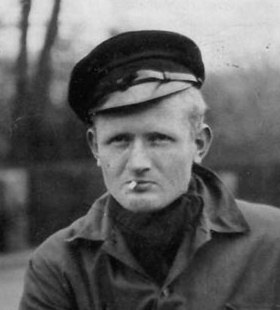 |
Above: In spring 1944 members of the Holger Danske group were arrested and sentenced to long prison terms or sentenced to death. Sixty-four members were executed by the Gestapo, which twice succeeded in infiltrating the organization. Holger Danske had a small liquidation cell that took care of more than 200 informers. Two of the most active Holger Danske members were Jørgen Haagen Schmith (1910–1944), left photo, and Bent Faurschou-Hviid (1921–1944), both famous under their aliases, Citronen (“Lemon”) and Flammen (“Flame”). No resistance member was more hated or sought by the Gestapo as was the red-haired Faurschou-Hviid. The Danish film Flame & Citron (2008), a fictionalized account of Faurschou-Hviid and Schmith, was a huge box-office success.
Danish Resistance Movement, 1943–1944
![]()

 History buffs, there is good news! The Daily Chronicles of World War II is now available as an ebook for $4.99 on Amazon.com. Containing a year’s worth of dated entries from this website, the ebook brings the story of this tumultuous era to life in a compelling, authoritative, and succinct manner. Featuring inventive navigation aids, the ebook enables readers to instantly move forward or backward by month and date to different dated entries. Simple and elegant! Click
History buffs, there is good news! The Daily Chronicles of World War II is now available as an ebook for $4.99 on Amazon.com. Containing a year’s worth of dated entries from this website, the ebook brings the story of this tumultuous era to life in a compelling, authoritative, and succinct manner. Featuring inventive navigation aids, the ebook enables readers to instantly move forward or backward by month and date to different dated entries. Simple and elegant! Click 











